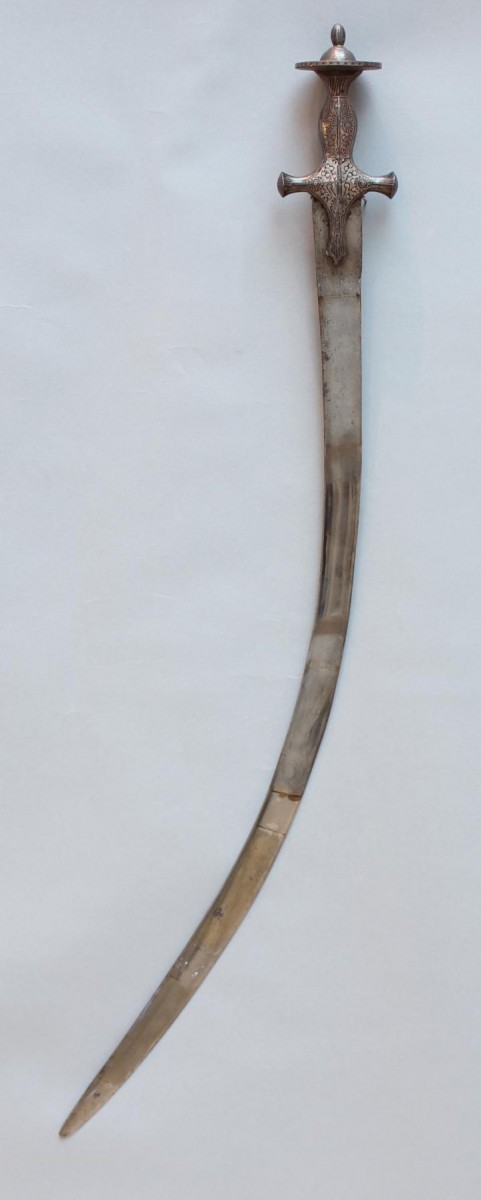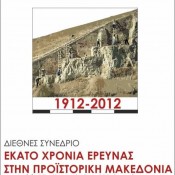Scientists and conservationists from Italy and the UK joined forces to study a curved single-edged sword called a shamsheer using classical and nondestructive techniques. The results of their research were published in Springer’s journal Applied Physics A – Materials Science & Processing (open access), under the title “Characterization of an Indian sword: classic and noninvasive methods of investigation in comparison.” Lead author of the paper is Eliza Barzagli of the Institute for Complex Systems and the University of Florence in Italy. The reasons for studying this particular object are given in the abstract of the paper: “The evolution of metallurgy in history is one of the most interesting topics in Archaeometry. The production of steel and its forging methods to make tools and weapons are topics of great interest in the field of the history of metallurgy. In the production of weapons, we find almost always the highest level of technology. These were generally produced by skilled craftsmen who used the best quality materials available. Indian swords are an outstanding example in this field and one of the most interesting classes of objects for the study of the evolution of metallurgy”. The scientists aim was to determine the composition, the microstructure, the level and the direction of residual strain and their distribution in the blade of the sword. To do that they used two different approaches: the classical one (metallography) and a nondestructive technique (neutron diffraction), in order to test differences and complementarities of these two techniques.
Invasive and non-invasive methods
As explained in the abstract of the paper: “To obtain a good characterization of artifacts studied by traditional analytical methods, an invasive approach is required. However, the most ancient objects are scarce in number, and the most interesting ones are usually in an excellent state of conservation, so it is unthinkable to apply techniques with a destructive approach. The analysis of blades that has been performed by metallographic microscopy has demonstrated the specificity of the production of this type of steel. However, metallographic analysis can give only limited information about the structural characteristics of these artifacts of high quality, and it is limited to the sampled areas. The best approach for nondestructive analysis is therefore to use neutron techniques.” Thus the sword first underwent metallographic tests at the laboratories of the Wallace Collection to ascertain its composition. Samples to be viewed under the microscope were collected from already damaged sections of the weapon. The sword was then sent to the ISIS pulsed spallation neutron source at the Rutherford Appleton Laboratory in the UK. Two non-invasive neutron diffraction techniques not damaging to artefacts were used to further shed light on the processes and materials behind its forging.
A high-quality sword of pure steel
The 75-centimeter-long sword from the Wallace Collection in London was made in India in the late eighteenth or early nineteenth century. The design is of Persian origin, from where it spread across Asia and eventually gave rise to a family of similar weapons called scimitars being forged in various Southeast Asian countries.
Scientists established that the steel used for the sword is quite pure. Its high carbon content of at least one percent shows it is made of wootz steel. This type of crucible steel was historically used in India and Central Asia to make high-quality swords and other prestige objects. Its band-like pattern is caused when a mixture of iron and carbon crystalizes into cementite. This forms when craftsmen allow cast pieces of metal (called ingots) to cool down very slowly, before being forged carefully at low temperatures. Barzagli’s team reckons that the craftsman of this particular sword allowed the blade to cool in the air, rather than plunging it into a liquid of some sort. Results explaining the item’s composition also lead the researchers to presume that the particular sword was probably used in battle.
The watered silk pattern
Craftsmen often enhanced the characteristic “watered silk” pattern of wootz steel by doing micro-etching on the surface. Barzagli explains that through overcleaning some of these original ‘watered’ surfaces have since been obscured, or removed entirely. “A non-destructive method able to identify which of the shiny surface blades are actually of wootz steel is very welcome from a conservative point of view,” she added.





